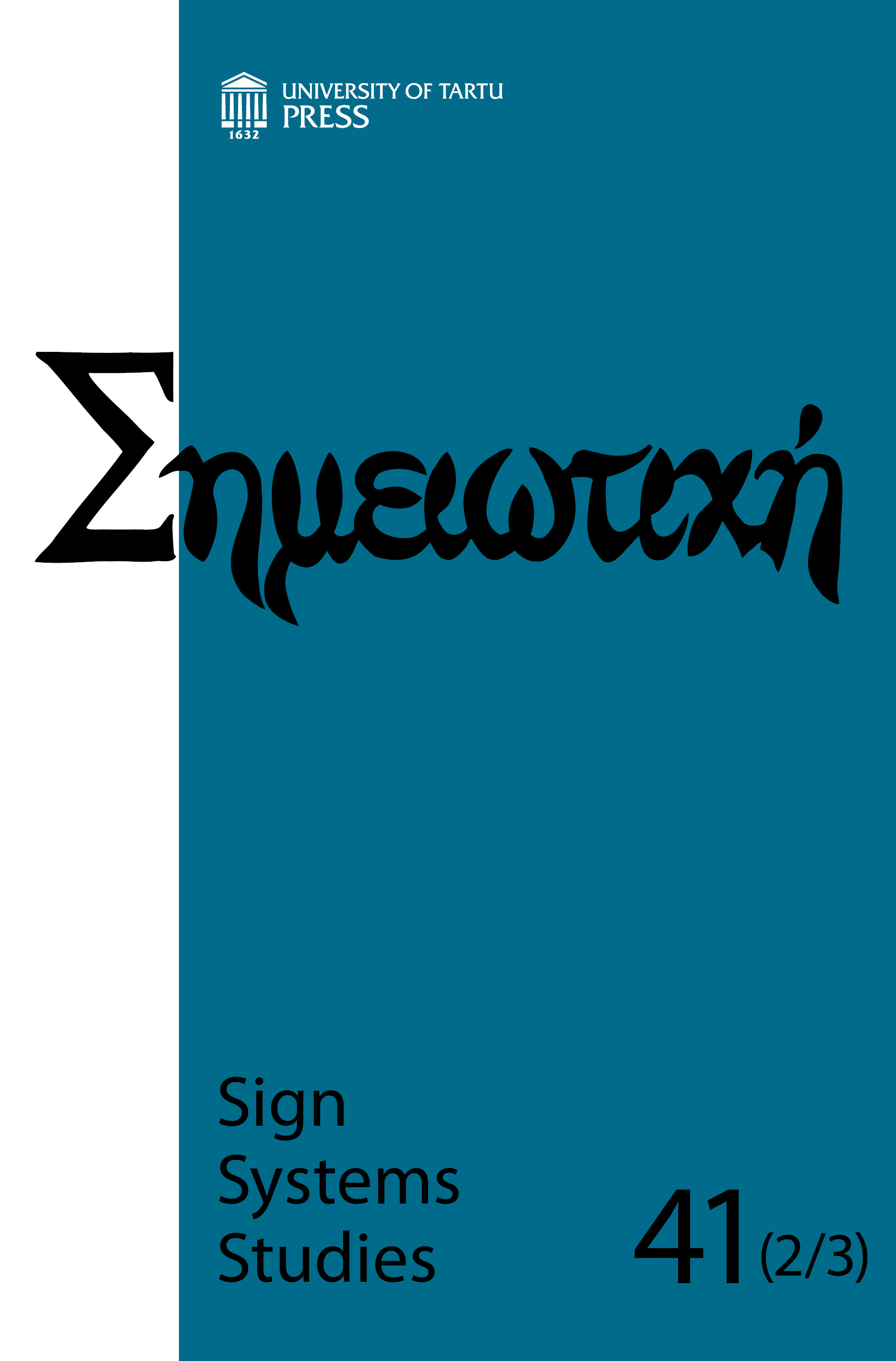From stage to brain: Montage as a new principle of scientific narrative
DOI:
https://doi.org/10.12697/SSS.2013.41.2-3.04Keywords:
montage, collage, expressive movement, forms of nonlinear scientific narrative, spherical bookAbstract
German Dadaists, Italian and Russian Futurists and Constructivists created in their experiments multi-medial orthopedic bodies as products of collage and montage. Sergei Eisenstein, who was influenced by these experiments, organized his theatrical productions as a chain of independent fragments capable of entering any possible combination/recombination and labelled this method “montage of attractions”. He used the same montage principle not only for a new theatrical or cinematic narrative but also to conceptualize the expressive movement of the theatrical or cinematic body created on stage and on screen. Finally he conceptualized montage not only as a means of conveying movement, but also of conveying a way of thinking. This inspired him to create a new form of scientific narrative in his two unfinished books. The subject to be analysed in the first book from 1929 – montage – inspired him to look for a new structure by organizing different texts in the form of a sphere. This form defined the method of writing his second project on the theory of the arts as a hypertext. Eisenstein gave this book the title Method (1932–1948).Downloads
Download data is not yet available.
Downloads
Published
2013-11-07
How to Cite
Bulgakowa, O. (2013). From stage to brain: Montage as a new principle of scientific narrative. Sign Systems Studies, 41(2/3), 200–218. https://doi.org/10.12697/SSS.2013.41.2-3.04
Issue
Section
Articles


